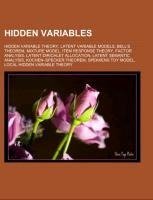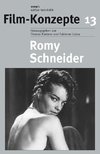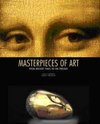
Hidden variables
Source: Wikipedia. Pages: 41. Chapters: Hidden variable theory, Latent variable models, Bell's theorem, Mixture model, Item response theory, Factor analysis, Latent Dirichlet allocation, Latent semantic analysis, Kochen-Specker theorem, Spekkens Toy Model,... Viac o knihe
Produkt je dočasne nedostupný
14.70 €
bežná cena: 16.70 €
O knihe
Source: Wikipedia. Pages: 41. Chapters: Hidden variable theory, Latent variable models, Bell's theorem, Mixture model, Item response theory, Factor analysis, Latent Dirichlet allocation, Latent semantic analysis, Kochen-Specker theorem, Spekkens Toy Model, Local hidden variable theory, Partial least squares regression, Probabilistic latent semantic analysis, Latent class model, Local independence, Pachinko allocation, Nuisance variable, Topic model, Doubly stochastic model. Excerpt: In theoretical physics, Bell's theorem (a.k.a. Bell's inequality) is a no-go theorem, loosely stating that: no physical theory of local hidden variables can reproduce all of the predictions of quantum mechanics. The theorem has great importance for physics and the philosophy of science, as it implies that quantum physics must necessarily violate either the principle of locality or counterfactual definiteness . It is the most famous legacy of the late physicist John Stewart Bell. Results of tests of Bell's theorem agree with the predictions of quantum mechanical theory, and demonstrate that some quantum effects appear to travel faster than light. Hence the class of tenable 'hidden variable' theories are limited to the non-local variety. However, none of the tests of the theorem performed to date has fulfilled all of the requisite conditions implicit in the theorem. Accordingly, none of the results are totally conclusive. Bell's theorem implies that the concept of local realism, favoured by Einstein, yields predictions that disagree with those of quantum mechanical theory. Because numerous experiments agree with the predictions of quantum mechanical theory, and show correlations that are stronger than could be explained by local hidden variables, the concept of local realism is thus refuted as an explanation of the physical phenomena under test, and superluminal effects are evidenced. Illustration of Bell test for particles such as photons. A source produces a singlet pair, one particle is sent to one location, and the other is sent to another location. A measurement of the entangled property is performed at various angles at each location.The theorem applies to any quantum system of two entangled qubits. The most common examples concern systems of particles that are entangled in spin or polarization. Following the argument in the Einstein-Podolsky-Rosen (EPR) paradox paper (but using the example of spin, as in David Bohm's version of the EPR argument), Bell considere
- Vydavateľstvo: Books LLC
- Formát: Paperback
- Jazyk:
- ISBN: 9781158020027


 Anglický jazyk
Anglický jazyk 




 Ruský jazyk
Ruský jazyk 



 Nemecký jazyk
Nemecký jazyk 
